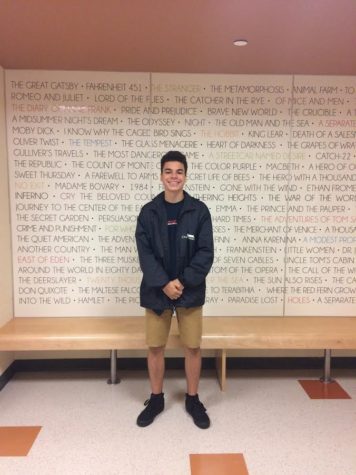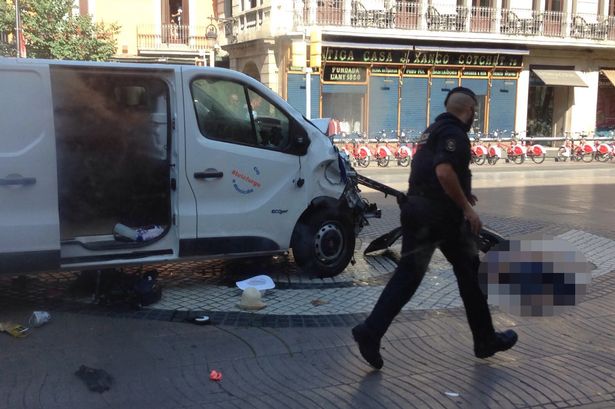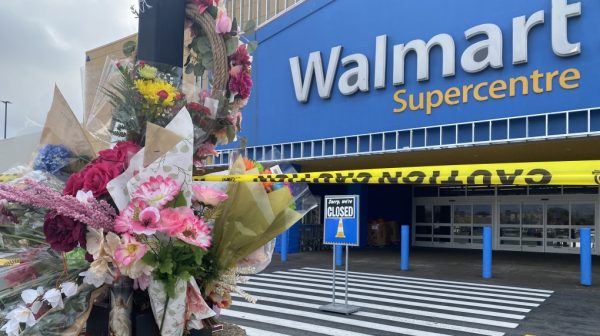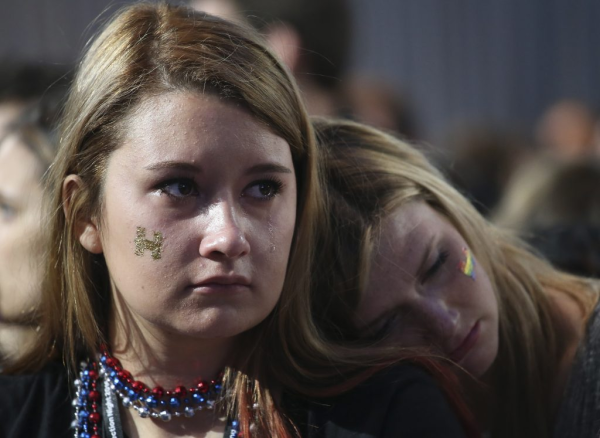Barcelona experiences multiple attacks
On Thursday, August 17, 2017, a driver drove his van into a widely populated street in central Barcelona called Las Ramblas, killing thirteen people and injuring more than 130 others.
The attack on Las Ramblas, in central Barcelona, occurred shortly after five p.m. According to The Telegraph the driver drove a white Fiat van, which veered into a pedestrian sidewalk for 500 meters (1, 640 feet) hitting pedestrians along the way.
The victims of the attack, whether they were killed or injured, hailed from twenty-four countries around the world.
Ages of the victims range from three to eighty years old.
Only a few hours later, on Friday, August 18, in the seaside resort of Cambrils, five men wearing suicide vests (which were later discovered to be fake) drove into pedestrians, injuring six people and eventually killing another person.
The suspected attackers also blew up a home in Alcanar, south of Barcelona on the 16th of August.
One of the attackers was later killed by armed police outside Subirats,a municipality in Barcelona.
The attack on Las Ramblas, in central Barcelona, occurred shortly after five p.m. According to The Telegraph the driver drove a white Fiat van, which veered into a pedestrian sidewalk for 500 meters (1, 640 feet) hitting pedestrians along the way.
The victims of the attack, whether they were killed or injured, hailed from twenty-four countries around the world.
Ages of the victims range from the ages of three to eighty years old.
The attack on Cambrils by the five attackers occurred early Friday, where according The Telegraph, the attacker drove an Audi A3 car into the seaside promenade, six people were injured, yet one person later died from her injuries.
Four of the suspected attackers were later arrested and taken to Spain’s National Court in Madrid on Tuesday, August 22, the judge, charged two of the attackers with terrorist offenses. However, the judge did order that one of the suspects of the attacks be released and another one be detained and questioned for an additional 42 hours.
It has been confirmed by Spanish news media and court officials that the attackers planned a more ambitions attack on Barcelona monuments.
In court, one of the attackers, Mohamed Houli Chemlal, told police that the members of the terrorist cell were assembling homemade bombs, and was instructed to blow himself up with the bomb. One of the planned targets was the unfinished Roman Catholic church in Barcelona, Sagrada Familia.
Yet, the terrorist attack was known before the actual date of events. According to The Times, the United States attempted to notify the Spanish police that the street of Las Ramblas was a target for the Islamic State two months prior to the attack.
The Spanish government and police force dismissed the warning saying that it lacked credibility and evidence.
As of August 31, the Spanish government admits to having received the warnings from the U.S. government. On August 30, a spanish newspaper called El Periodico reported that the US National Counterterrorism Center (NCTC), which coordinates with the Central Intelligence Agency (CIA), had alerted Spanish intelligence and police forces on May 25, that the Islamic State was planning “to conduct unspecified terrorist attacks during the summer against the crowded tourist sites in Barcelona, Spain specifically Las Ramblas street.”
The Spanish government has yet to make any formal comments on the matter, and the US Embassy in Madrid could not comment on intelligence matter.
Last week on Saturday, the 26 of August, hundreds of thousands of people gathered on Barcelona’s Passeig de Gracia behind a banner, which reads No Tinc Por (I am not afraid), in defiance of the terror attack.
The event was the largest march in Spain since the approximately two million people protested against the Iraq war in 2003. The mayor of Barcelona called on people to “fill the streets to overflowing” in showing unity against terrorism.
Yet, debate has stirred since the events of Barcelona’s terrorist attack, with the events of Charlottesville, Virginia were a man drove a car into a group of counter-protesters killing 1 and injuring six people, the weekend prior to the events in Barcelona.
It brings into question of how attacks on civilians with vehicular has become increasingly more common, and is more often the weapon used by the attackers.
One example consist of the 2016 attack on Nice, France where a driver drove a truck into a large group of people on Bastille Day, the national holiday of France, killing eighty-six people and injuring 458 people.
The use of vehicles to perform terror attacks has become increasingly common form of weaponry, which leads to the question should countries with large tourist populations or large populations begin to create roadblocks or any forms of vehicular traffic control to decrease the probability of a terror attacks from happening?
The question can only be answered and taken into action by the countries themselves, but many people around the world gather in the fight to combat terrorism, and for those in Barcelona it can be a painful reminder of the world we now live in.

I am a senior at NHS. I want to be a microbiologist or a biomedical engineer. I am taking this class because I enjoy writing and researching real time...








